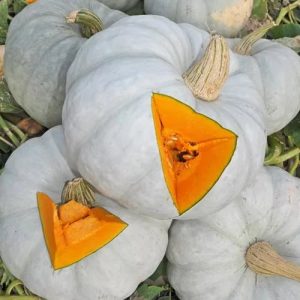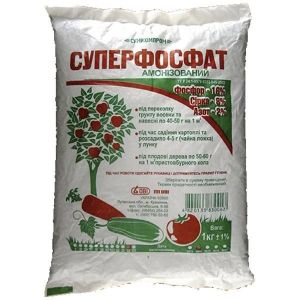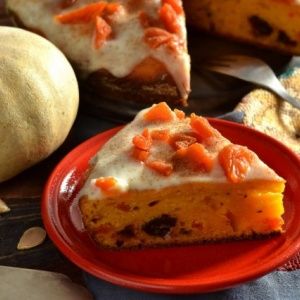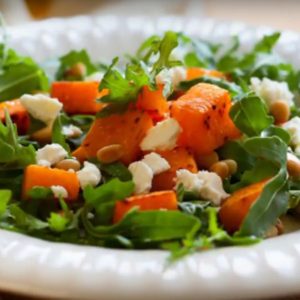Characteristics and description of the honey pumpkin variety "Kroshka": we grow our own favorite of experienced farmers
Pumpkin is a tasty and healthy crop that is easy to grow. Vegetable is used to prepare nutritious pickled dishes, salads, juices. Pumpkin contains B vitamins, magnesium, calcium and fiber.
They eat not only pulp, but also seeds. From all the variety of varieties, gardeners distinguish Kroshka pumpkin. The vegetable has excellent taste, has a sweet melon aroma. Let's take a closer look at how to grow this variety and get a rich harvest.
The content of the article
Description of the variety
The variety is medium late, the fruits ripen within 120-130 days from the moment of planting. They grow pumpkin in a greenhouse or in open beds. The culture rarely gets sick and is exposed to insect pests.
Distinctive features
The bushes are medium-sized, the whips are long. Leaves are elongated, classic green. To obtain a rich harvest during the fruiting period, several lashes are removed. Grown pumpkin seedlings or seeds. Plants are resistant to sudden changes in weather, easily tolerate drought or high humidity.
Fruit characteristics and yield
 The weight of one smooth pumpkin is 2-3 kg. The color is light gray. The pulp is orange, dense. Taste quality is high, pumpkins are sweet and juicy.
The weight of one smooth pumpkin is 2-3 kg. The color is light gray. The pulp is orange, dense. Taste quality is high, pumpkins are sweet and juicy.
The peel is dense, which is why the Crumb is stored for a long time and does not lose its qualities. The yield is stable, from 1 sq. m gardeners collect 10-12 kg.
How to grow
In regions with a temperate climate, gardeners grow Crumb with seeds, placing them directly in open ground. In Siberia and the Urals, seedlings are first prepared in order for the plant to better adapt to external climatic conditions.
Let's consider each method in detail.
Planting with seeds
The main stage is the preparation of the seed. For this, gardeners soak the seeds in a solution of succinic acid. An odorless, colorless powder strengthens the immunity of future plants and protects them from diseases and pests. 2 g of succinic acid are dissolved in a small amount of warm water. Dry seeds are soaked in solution for 12-24 hours, then dried in the shade.
Next, prepare the soil. Sunny fertile beds are suitable for pumpkins. The culture prefers a mixture of sandy loam and loamy soils. In mid-late October, the beds are dug up and manure fertilizers are applied. With the arrival of spring, the soil is dug up again and loosened. To get a rich harvest, before planting, the soil is limed - sprinkled with a mixture of lime and dry wood ash. This composition lowers the acidity of the soil and saturates it with useful elements.
Important! For 1 sq. m no more than two plants are planted. 2-3 seeds are placed in each groove, sprinkled with earth on top and watered abundantly with warm water. For the first time, gardeners recommend covering each seedling with a plastic wrap cap. This will protect the sprouts from possible frost and rain.
Planting seedlings
Seedlings are planted in clean containers. These can be flower pots, peat tablets, plastic cups. Land from the garden or a ready-made composition is used as seedling soil. Peat, humus or liquid chicken droppings are added to the soil. The distance between the seedlings should be at least 15 cm. The seedlings are kept, as a rule, on the windowsill, where there is a lot of light and heat.
The optimum temperature for growing is at least 20 degrees Celsius, the humidity level is 85-90%. Seedlings are watered once every 5 days, while it is important to prevent waterlogging of the soil. To accelerate growth, seedlings are fertilized with a growth stimulator "Kornevin". It has a beneficial effect on the development of the pumpkin root system, making it more powerful. After 2 weeks from the moment of planting, pumpkin seedlings are fertilized for the first time. Urea, ammonium nitrate or superphosphate are recognized as excellent remedies.
Before planting in open ground, seedlings are watered abundantly. A large lump of wet earth forms on the roots, so the sprout can be easily removed from the container and placed on the beds.
It is interesting:
The harm and benefits of dried pumpkin: how it affects the body, how to dry it properly.
Care
Water the crumb pumpkin every 4-6 days. The intensity and frequency of watering depends on the weather conditions. With frequent rains and fogs, the beds are watered less often, about 1 time per week. Periodically, instead of ordinary water, a solution based on onion peels is used. The tool not only moisturizes the earth, but also serves as a prevention of the appearance of pumpkin pests. When watering, water is directed directly under the roots, bypassing leaves and stems. Otherwise, the risk of developing fungal diseases and viral infections increases.
Before watering, the beds are loosened. The procedure saturates the earth with oxygen, improves the plant's metabolism. In parallel, weeds and foreign debris are removed from the beds. Twice a season, the soil is sprinkled with river sand or sawdust, which are recognized as effective natural leavening agents.
The pumpkin is fertilized every 15-20 days. During the flowering period, emphasis is placed on mineral fertilizing. Excellent means - preparations "Fitosporin", "Nutrivant", Bordeaux liquid. The preparations improve the palatability of the fruits, make them more juicy. During the fruiting period, farmers focus on organic matter. The pumpkin is fertilized with yeast, ash, nettle and aloe juice. These methods are safe for the plant and for humans.
Features of cultivation and possible difficulties
The richer the soil, the more lashes develop in one plant. On each, flowers are formed and a large number of fruits are tied. To make the harvest tasty, the bushes are shaped and pinched. If this is not done in time, a lot of pumpkins will grow, but they will be tasteless and unripe.
In Crumb, the first fruit is formed on the main shoot, immediately after which it is pinched. Now all nutrition will be spent on the formation of this fruit, it will grow large and tasty. Throughout the entire growth of the bush, the lashes are thinned out, laid out too long on the ground, sprinkled with soil on top.
Growing tips from experienced gardeners
Gardeners from all over the country share with each other tips and tricks on growing the Kroshka variety. If you follow simple rules, the harvest is tasty and stored for a long time:
- before planting, the seeds are hardened: placed in a freezer for 2-3 hours for a week;
- planting a pumpkin after legumes, potatoes or onions;
- before planting, the ground is watered with boiling water to destroy larvae and insects;
- when growing crops in a greenhouse, the room must be ventilated daily;
- the beds are watered in the morning or evening;
- rainwater is used for irrigation;
- when applying mineral fertilizers and growth stimulants, observe the dosage indicated on the package.
Diseases and pests
Pests destroy both young plants and bushes with ripe fruits. There are several reasons for the appearance of insects: infected soil, improper care, sudden changes in weather.
Most often found in the beds:
- Spider mite... A small bug barely reaches 1 cm in length, so it is very difficult to see it on a pumpkin. The mite infects fruits and foliage. The pest is masked depending on the color of the environment, it can be either light green or brown.An insect appears due to non-observance of the rules of crop rotation, an excess of mineral dressings. As a preventive and curative measure, plants are sprayed with Bordeaux liquid, and the beds are fertilized with ash.
- Slugs... Jelly-like and slippery insects outwardly resemble a snail without a shell. Slugs appear due to high humidity and heat. Pests suck out nutrients from the bush, which is why the plant withers and soon dies. In the fight against slugs, a solution of copper sulfate and soap sprays help.
- Whitefly... Small white flying midges gather in flocks from the back of the leaf. It is possible to see them only with a careful examination of the culture, since their size does not even reach 0.5 cm. Because of the whitefly, the leaves curl and acquire a yellow tint. To prevent the appearance of whiteflies, summer residents spray the bushes with a solution based on aloe juice or milk whey.
The most common diseases are late blight and tobacco mosaic. Late blight is a fungal infection that infects plants in hot, humid summers. The fungus appears in the form of brown spots on the leaves and fruits. If measures are not taken in time, the bushes die.
For prophylaxis use Bordeaux liquid, the drug "Oxyhom". The tobacco mosaic appears as large yellow patterns. The virus infects young bushes, over time, the patterns begin to grow. Summer residents advise using the drug "Maxim" or spraying with potassium permanganate.
Harvesting and application of the crop
 The crumb is harvested in late August - early September. The fruits become firm and firm, with a sweet melon aroma.
The crumb is harvested in late August - early September. The fruits become firm and firm, with a sweet melon aroma.
They pick vegetables together with the stalk, so the shelf life of the product increases. After harvesting, vegetables are not washed, but wiped with a dry cloth. For use, specimens with cracks and scratches are used. Other fruits are removed for long-term storage in a basement or cellar.
Due to its rich content of vitamins and minerals, pumpkin is used for preparing dietary and nutritious meals. Pies, porridge, salads, side dishes and soups are made from it. Sweet foods are especially appreciated.
For example, Crumb makes excellent pies, muffins and cheesecakes. Many housewives pickle vegetables and even prepare fermented winter dishes.
Interesting! Pumpkin is also used in cosmetology. The grated pulp is an excellent tonic for all skin types. It has a strong moisturizing and anti-aging effect. The mask is applied to the face for 15-20 minutes, then washed off with cold water.
Advantages and disadvantages of the variety
The main advantages of the variety include excellent taste and aroma. The sweet yellow pulp is delicious both fresh and in other dishes. The product is indispensable for proper nutrition, helps to lose weight. It is easy to grow a crop, the main thing is to observe the regime of watering and feeding. Several times a season, summer residents carry out preventive maintenance, and the culture does not get sick.
Of the shortcomings, they note the fact that the bushes need the obligatory formation and pinching of the tops, but for experienced gardeners this is not difficult, and beginners can quickly learn this.
Farmers reviews
In order to finally understand what the Tiny variety is, or as gardeners call it, Tiny, we will study several reviews about it.
Nikita, Oryol: “Sweet pumpkins Kroshka are my favorites. They grow small, even. The unusual color of the vegetable attracts attention, and the bright yellow pulp is always pleasing to the eye. I cook pickled and pickled dishes from pumpkin. "
Maria, Sochi: “Pumpkin Kroshka was advised by my neighbors in the garden. At first I didn't like the pale gray color of the fruit, but when I cut one pumpkin, I was surprised. Sweet, juicy, soft, melon-like flesh, very tasty. I will grow more. "
Irina, Volgograd: “I've heard a lot of praise about the pumpkin Baby.I hoped to grow a rich harvest, planned to make winter preparations. However, a month after planting, I noticed slugs on the bushes. I followed all the rules of agricultural technology, so what is the reason for their appearance, I cannot understand. We managed to get rid of the pests, but the opinion about the variety deteriorated. "
Read also:
Simple and delicious pickled pumpkin recipes: cooking instructions.
The best pumpkin varieties for open ground with photos and descriptions.
How, apart from color, does a white pumpkin differ from the rest?
Conclusion
Honey pumpkin Crumb is versatile in use: in cooking, folk medicine, cosmetology. To obtain a rich harvest, summer residents are advised to grow crops in seedlings, planting them on fertile sunny beds.
Pumpkin responds well to feeding with ash, ammonium nitrate and manure. During the fruiting period, summer residents form bushes and pinch the tops. For long-term storage, the fruit is cut along with the stalk.